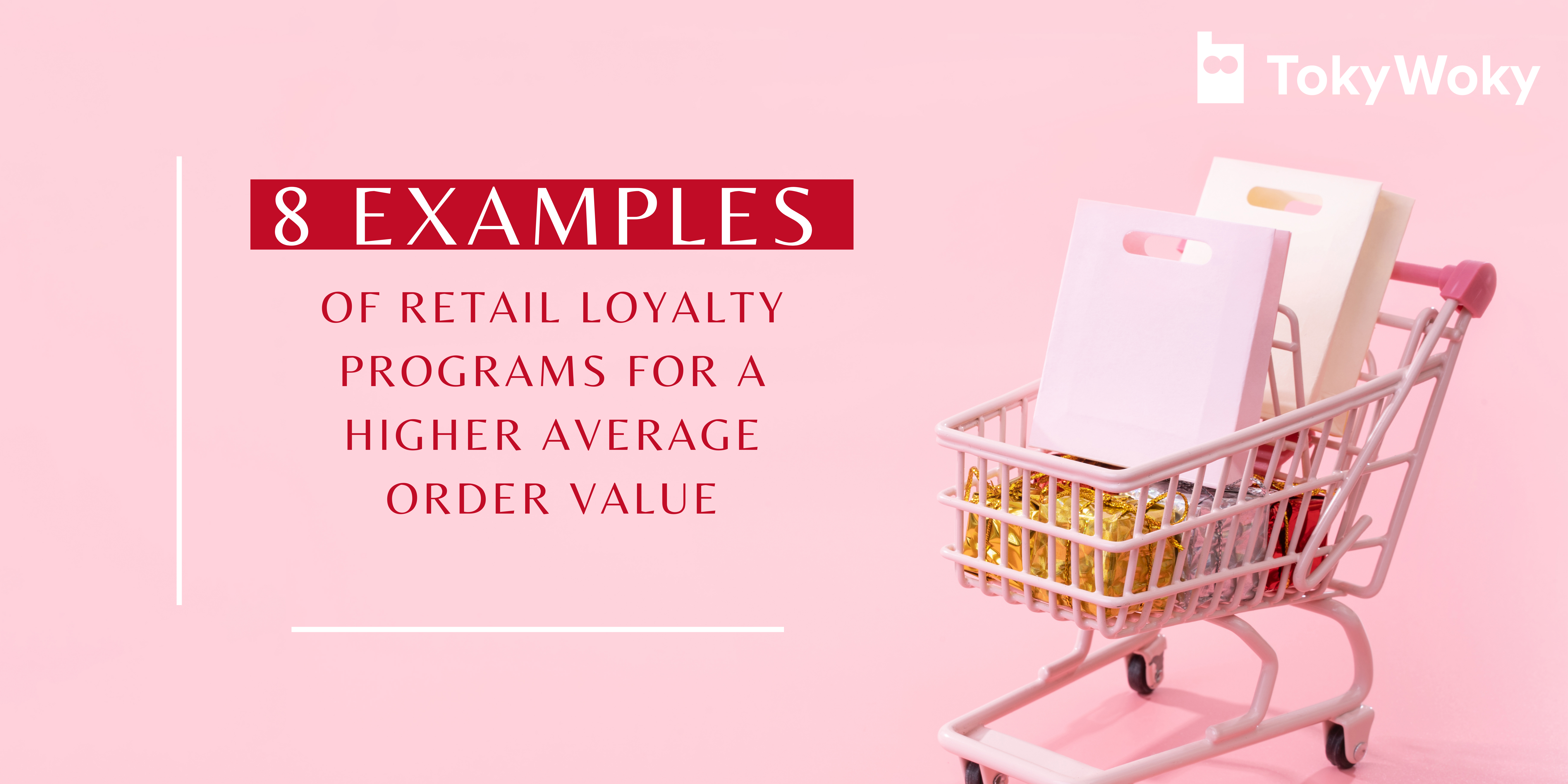
With retail players multiplying their acquisition offers and marketing strategies to attract new business, consumers are spoilt for choice when it comes to shopping. The real challenge is to retain these one-time customers and turn them into loyal advocates of their brand, and make their investment worthwhile.
To do this, most brands have implemented a loyalty program which can take multiple forms. Incentivizing customers is a great way to encourage frequent repeat purchases, but how do you choose the most effective scheme to increase average order value?
In this article, we go through 8 examples of the most popular loyalty program types to help you make the best decision for your business.
What is a loyalty program?
A loyalty program is a marketing strategy aimed at retaining customers and getting them to continue to shop with or use the services of the brand, leveraging tactics ranging from discounts and cumulating redeemable points through to access to exclusive services or experiences.
90% of businesses have a loyalty program in place and 72% of US adults belong to at least one loyalty scheme (Oracle).
In fact, according to research by eMarketer, 58.7% of internet users believe earning rewards and loyalty points is one of the most valued aspects of the shopping experience and over 70% of consumers are more likely to recommend a brand if it has a good loyalty program (Bond).
There are three main reasons for consumer loyalty to a brand:
- Necessity: your brand is the only option
- Accessibility: your products and services are the easier option
- Attraction: you’re offering the best product or experience with consumer satisfaction as your top priority
Loyalty programs touch on the attractivity of a brand, where the value offered by the scheme creates brand attachment, with the objective that the customer will prefer to shop from this brand over others.
How do loyalty schemes increase average order value?
The profitability of focusing on customer retention has been proven multiple times, making loyalty an imperative asset for any retail brand.
Here are a few interesting facts:
- It costs 5 times more to acquire a new customer than to retain an existing one
- 43% of customers spend more money with brands they’re loyal to
- Increasing customer retention rates by 5% can boost profits by 25% to 95%
- 65% of a company’s business comes from existing customers
- The probability of selling to an existing customer is 60-70%
- The Pareto principle shows that 80% of a brand’s profits come from 20% of its customers
- When a company achieves a 7% increase in brand loyalty, the customer lifetime value of each client can rise by 85%.
With existing customers spending 31% more per purchase, leveraging a loyalty scheme to get them to come back is the preferred strategy. Not only does a loyalty program drive the customer to buy more often, but it also encourages them to buy more products in a single purchase, naturally increasing average order value.
Rewards-based loyalty programs
These are the most common and traditional loyalty schemes and are based on transactional rewards. For example, a customer will get $5 off if they acquire 50 points from previous or current purchases. These direct reward systems do have their advantage, as customers know what they need to do to receive their reward, and they exist in multiple formats.
Points-based programs
Free to join, straightforward to use, this type of scheme is the most common and allows customers to earn points for each purchase, which they can then redeem on their next purchase to receive a discount.
Madewell Insider program is an example of a successful fashion points loyalty program:

Tiered programs
Tiered programs encourage customers to spend more to reach a higher level of membership, giving them access to more discounts and benefits. These programs are also transaction-based and usually work with points, but are more tailored towards recognizing high value customers.
Sephora Beauty Insider loyalty program is wildly popular:
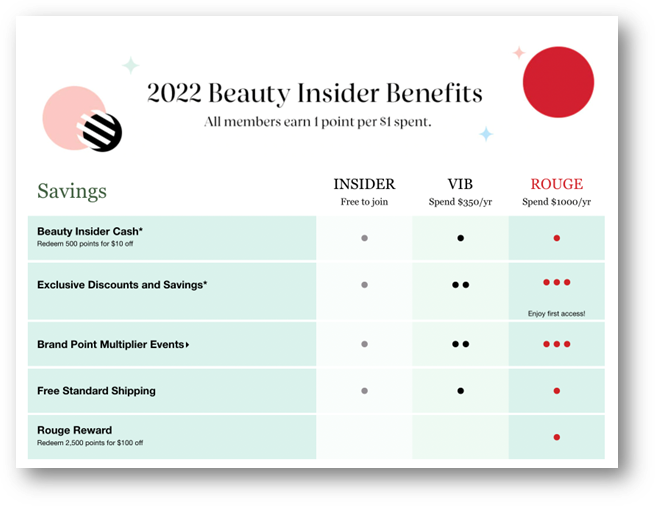
Punch card programs
The ancestor of modern digital points programs, punch cards are still often used by local food or beauty outlets. They’re based on a paper loyalty card that gets stamped for each purchase and typically results in a free product once a certain number of purchases have been completed.
Although they discontinued the program, Subway was a good example of a punch card system:
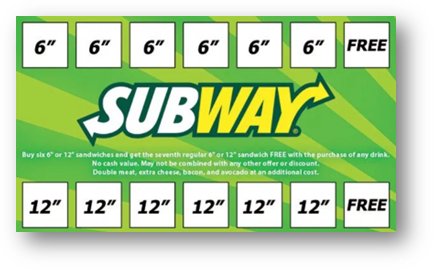
Cashback programs
These allow loyal customer to earn money back from their purchases, either directly with a brand or through a cashback broker such as Quidco. Similar to points-based programs, the customer cumulates a certain amount of cash that they can then reuse in future purchases.
An example of a cashback loyalty scheme is Tesco’s Clubcard:
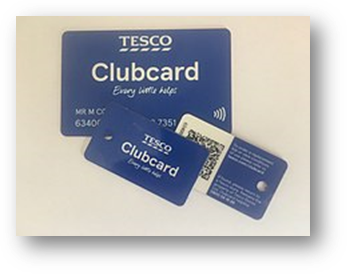
Coalition programs
This is where multiple brands partner to create a standalone program, usually based on points that can then be redeemed across a number of different businesses.
The Nectar scheme is one of the most popular in the UK with over 300 participating partners:
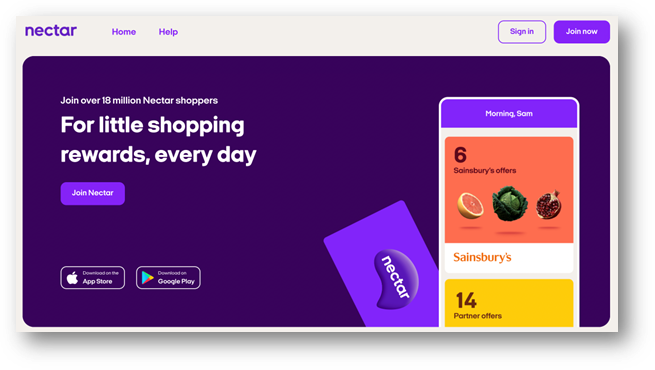 Although there is a direct link between customer loyalty rewards and customer retention, traditional loyalty programs incentivize and reward purchases only, but ignore the social aspect of loyalty. Rewards-based programs lack interactivity between the wider community of consumers (C2C) as the interaction remains merely that of brand-to-customer (B2C).
Although there is a direct link between customer loyalty rewards and customer retention, traditional loyalty programs incentivize and reward purchases only, but ignore the social aspect of loyalty. Rewards-based programs lack interactivity between the wider community of consumers (C2C) as the interaction remains merely that of brand-to-customer (B2C).
In addition, discounts tend to dilute the value of the brand over time with consumers waiting for the next promotional offer to complete their purchase and in the long run, they may become more “bargain hunters” than loyal customers.
This one-size-fits-all approach means that customers are all recognized in the same way, with little to no personalization, especially for high-value customers. The modern consumer wants more than that: they want to belong.
Fee-based loyalty programs
Less common than rewards-based schemes, paid loyalty programs involve customers being able to access benefits or permanent discounts in exchange for an upfront fee, paid monthly or on an annual basis.
The value of these programs is usually very high to make it worthwhile for subscribers and they can typically access benefits instantly as opposed to waiting for their next purchase. For the company offering this type of loyalty scheme, the return on investment is also very high. McKinsey conducted thorough research on paid loyalty programs and found that members of fee-based loyalty programs are 60% more likely to spend more on the brand, whilst free loyalty programs only increase that likelihood by 30%.
Amazon Prime is probably the most popular fee-based loyalty scheme in the market, with customers benefitting from faster and free delivery on certain items, as well as access to media platforms such as video or music content.

Experience-based loyalty programs
With rewards-based schemes having a limited impact, retail & CPG industry leaders have started to invest in an alternative model, based on building emotional loyalty with their customers as opposed to simply relying on transactional loyalty. At TokyWoky, we believe this is the way forward. True loyalty cannot be strictly transactional. Loyalty is emotional, it's about being attached to a brand that you love, trust, and that shares your values.
To attract and increase this kind of loyalty, these brands are building an online community where they gather their best customers in a dedicated space where they can come together and interact with one another, powered by a wide range of engaging experiences created by the brand beyond the simple purchase journey and traditional brand-to-consumer marketing strategies.
By sharing their own experiences with a brand’s products, exchanging thoughts with others and actively participating in the brand’s activities in a dedicated space, community members become more attached to the brand, which encourages them to be loyal, repurchase from the brand and tell their friends. TokyWoky’s clients typically triple their Average Order Value and Customer Lifetime Value.
A brand community’s primary purpose is to offer engaging experiences that support a long-term loyalty and retention strategy. These experiences, or activities, keep members coming back over time so that they can interact with fellow fans and share their own views, within the realm of the brand, whilst benefitting from a gamified experience.
There are multiple loyalty-building activities to choose from with a community platform like TokyWoky:
- Competitions
- Product tests & reviews
- Customer events
- Discussion boards
- Gamification
FeelUnique’s brand community boosts loyalty and revenue:
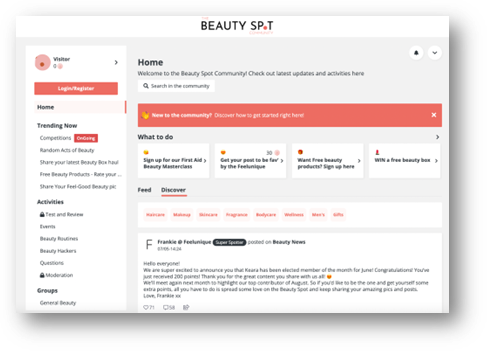
Monki enjoys a 4X increase on the conversion rate from their community members:
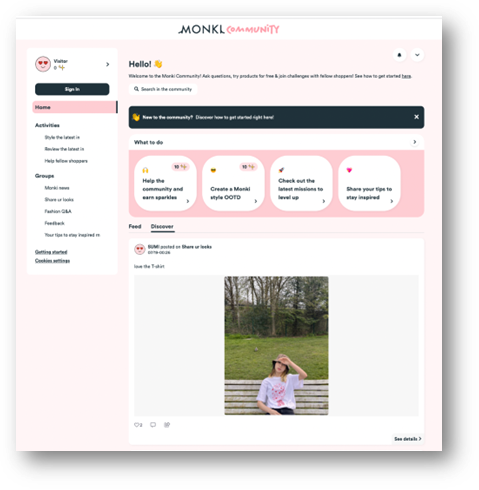
How to choose the best customer loyalty strategy for my retail brand
If you’re looking to get started with a loyalty program, your first thought is naturally likely to be a rewards-based scheme. This approach is really effective for brands that want a very large number of consumers to join the program, regardless of their value, and aren’t looking to necessarily personalize the loyalty experience. Increasing AOV with this type of loyalty program will entail offering rewards related to more expensive purchases e.g. a minimum order value or multiple products.
For brands looking to leverage the potential of their best customers to drive loyalty and advocacy beyond transactions, experience-based loyalty programs impulsed by a brand community, are the best solution to increase AOV, especially if the focus is placed on encouraging customers to pair products together through beauty routines or outfits of the day, as well as posting product reviews.
Brand communities do not actually need to replace traditional loyalty programs, they’re designed to further retain customers by providing an additional layer of engagement to a brand’s existing loyalty strategy. In fact, TokyWoky’s platform can easily integrate with most loyalty softwares, including custom solutions, to ensure a seamless customer experience.
As for fee-based loyalty programs, these are not suitable for every brand, although they have a clear impact on customer lifetime value. Beyond the membership cost which is a barrier to entry that will require a lot of proof of value, paid schemes entail quite a bit of resources to manage them from billing to customer service training. As such, they’re best suited to large brands who are able to support these requirements as well as offer benefits that outweigh the fee.
If you want to learn more about the TokyWoky platform and the community building process, get in touch with our team. We’d love to help you choose the best strategy for your brand community!




.png)
